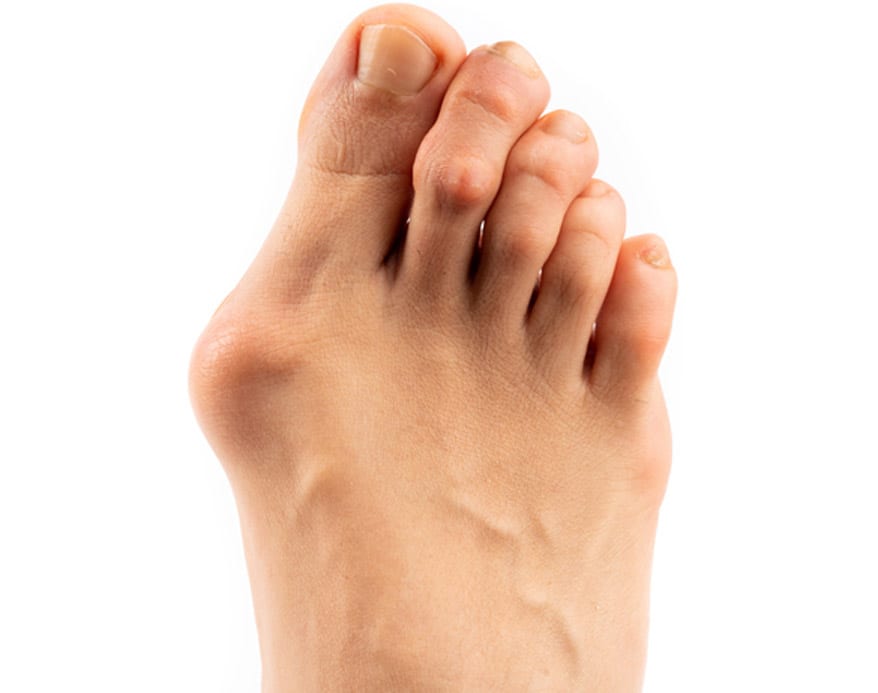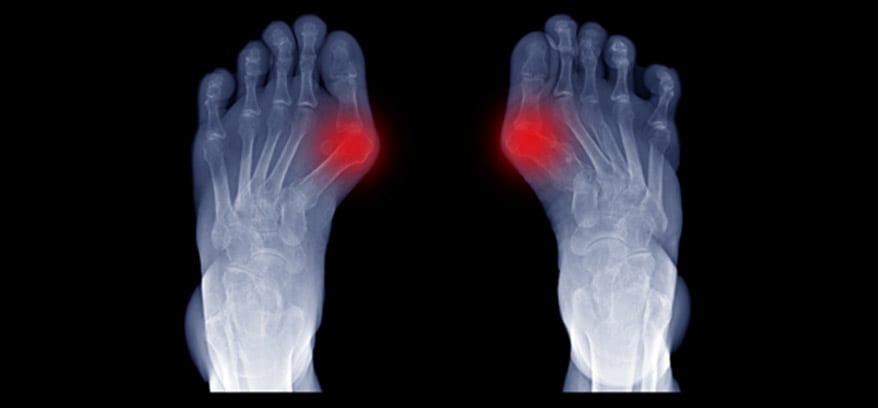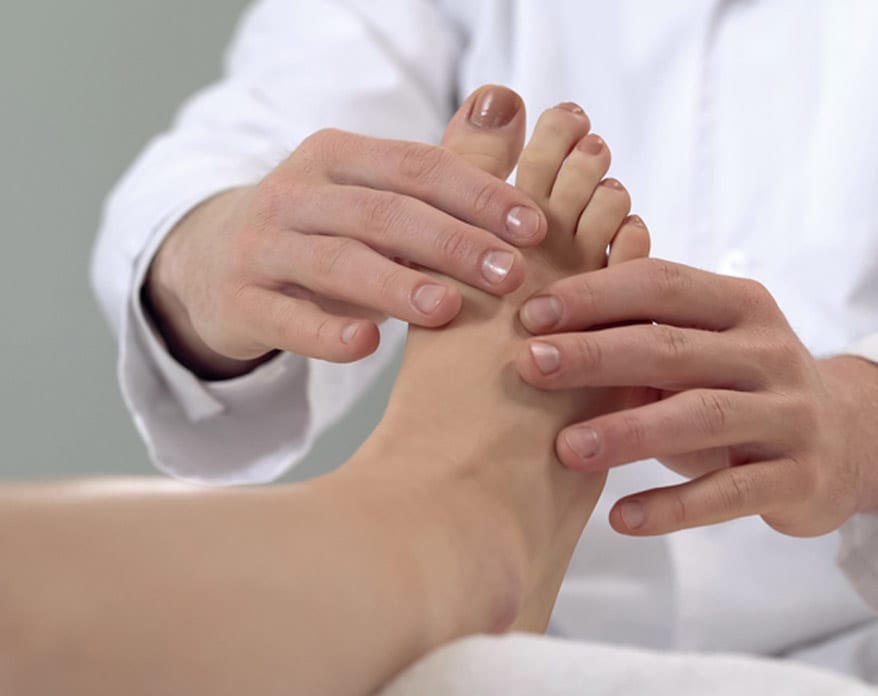
A bunion is a bony bump on the joint at the base of the big toe that forms when some of the bones in the front of the foot move out of place. As a result, the tip of the big toe is pulled toward the smaller toes. The skin over the bunion may be red and sore. Smaller bunions may also form on the joint of the little toe.
What Causes Bunions?
Bunions may form as a result of:
- Wearing tight and narrow shoes
- The shape of the foot
- A foot deformity present at birth
- A medical condition, such as arthritis and rheumatoid arthritis
- A foot stress or injury
Experts disagree as to whether tight, high-heeled or very narrow shoes directly cause bunions or only contribute to their development.
Signs and Symptoms
Bunions may cause the following signs and symptoms:
- Corns or calluses
- Bulging bump on the outside of the base of the big toe
- Swelling, redness, or soreness around the big toe joint
- Persistent or intermittent pain
- Limited movement of the big toe


Left untreated, bunions may cause the following conditions:
- Bursitis. A condition in which the small fluid-filled pads that cushion the bones near the joints become inflamed.
- Hammertoe. A condition in which an abnormal bend in the middle joint of the toe causes pain and pressure.
- Metatarsalgia. A condition that causes pain and swelling in the ball of the foot.
Risk Factors for Bunions
Individuals may be at increased risk of developing bunions if they:
- Wear high heeled shoes, which crowd the toes
- Wear ill-fitting shoes
- Have an inflammatory condition that makes them more likely to develop bunions
- Are genetically predisposed to develop bunions
How Bunions Are Treated
Depending on the severity of the bunion, patients are encouraged to consider the following non-surgical treatments:
- Wearing spacious and comfortable shoes that don’t crowd the toes
- Inserting over-the-counter, non-medicated bunion pads or cushions to act as a buffer between the foot and shoe to relieve pain and pressure
- Taking medication such as acetaminophen, ibuprofen, or naproxen sodium to manage pain
- Using padded shoe inserts to help distribute pressure evenly when walking to reduce symptoms and prevent the bunion from getting worse
- Applying ice to relieve soreness and swelling
Patients who have not experienced relief from conservative treatment may need surgery. Surgical procedures may involve:
- Removing the swollen tissue surrounding the big toe joint
- Removing part of the bone to straighten the big toe
- Realigning multiple bones in the forefoot to a normal position to correct an abnormal angle in the big toe joint
- Joining the bones of your affected joint permanently
Some patients are able to walk right after surgery. Other patients may need weeks or months to fully recover.
How To Prepare For An Appointment
Patients experiencing symptoms of a bunion should ask their doctor the following questions during an appointment:
- What is causing the pain?
- Is the condition temporary or permanent?
- What are my treatment options?
- Should I receive surgery? Why or why not?
- Are there any conservative treatments I should consider?


